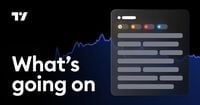Banco Santander (Brasil) S.A., one of the country’s leading financial institutions, has unveiled a significant share buyback program, marking a new chapter in its capital management strategy. The bank’s board of directors approved the initiative on September 25, 2025, paving the way for the repurchase of up to 37,463,477 Units or American Depositary Receipts (ADRs)—a move that represents approximately 1% of the company’s total capital stock as of June 30, 2025. This development, reported in filings with the U.S. Securities and Exchange Commission and highlighted by outlets such as Refinitiv and InvestingPro, signals the bank’s intent to optimize its capital structure while reinforcing its commitment to employees and shareholders alike.
The buyback program is set to begin on September 26, 2025, and will remain active for eighteen months, expiring on March 26, 2027. During this period, the bank or its Cayman branch will be authorized to purchase Units—each consisting of one common share and one preferred share—or ADRs. These repurchased shares may be held in treasury or sold at a later date, depending on the bank’s evolving strategic needs.
According to the bank’s official SEC filing, the primary objectives of the buyback are twofold: to optimize capital structure management and to provide shares for long-term incentive plans targeting employees and management. This dual focus is expected to benefit both the company’s internal stakeholders and its broader investor base. As the bank stated, the program aims to "enhance shareholder value through efficient capital management and support the company’s Long Term Incentive Plans for its employees."
Banco Santander Brasil has made it clear that all purchases under the buyback program will be conducted transparently on organized markets. Units will be acquired on B3 S.A. Brasil, Bolsa, Balcão through Santander Corretora de Câmbio e Valores Mobiliários S.A., while ADRs will be bought on the New York Stock Exchange via Santander Investment Securities Inc. Notably, the bank emphasized that no derivatives will be used in connection with these transactions—a detail meant to assure investors of the straightforward, risk-mitigated nature of the program.
As of June 30, 2025, Banco Santander Brasil had 360,657,265 outstanding common shares and 388,461,675 outstanding preferred shares, not counting those already held in treasury or by controllers and administrators. At that time, the bank’s treasury contained 13,780,772 common shares and an equal number of preferred shares. With such a large base, the buyback’s scope—covering about 1% of total capital—may seem modest, but it reflects a targeted approach designed to balance flexibility with prudence.
Financially, the bank appears well-positioned to execute the buyback. As of December 31, 2024, Banco Santander Brasil reported R$32.7 billion in available funds in its capital and revenue reserves (excluding legal reserves), providing ample liquidity to support the program. The company has also assured investors that the initiative will not affect its obligations to creditors or its ability to pay mandatory dividends. The board has granted the executive team full authority to implement the program, signaling a unified commitment at the highest levels of the organization.
Market analysts have taken note of the move. According to TipRanks and Spark, TipRanks’ AI Analyst, Banco Santander Brasil’s stock is currently rated as Outperform, citing the bank’s solid revenue growth, improved profitability, and a strong balance sheet. However, some caution remains, with liquidity concerns flagged due to declining cash flow. The most recent analyst rating is Hold, with a $5.70 price target, reflecting a balanced view of both the bank’s strengths and its ongoing challenges.
The buyback comes at a time when the bank has demonstrated robust performance. InvestingPro data reveals that Banco Santander Brasil has shown strong returns over the last five years and maintains profitability, with positive earnings expected for the current year according to analyst forecasts. The bank’s average trading volume stands at 684,846, and its current market capitalization is reported at $20.32 billion, underscoring its significant presence in the Brazilian financial landscape.
For those unfamiliar, Banco Santander (Brasil) S.A. is a key player in the financial services industry, offering a comprehensive range of banking products and services to individuals and businesses across Brazil. The bank’s focus on providing tailored financial solutions has helped it maintain a strong foothold in the competitive Brazilian market.
The strategic rationale behind share buybacks is often debated in financial circles. On one hand, buybacks can signal management’s confidence in the company’s future prospects and serve as a tool to return value to shareholders by potentially boosting earnings per share. On the other, critics sometimes argue that such programs can be a sign that a company lacks better investment opportunities for its capital. In Banco Santander Brasil’s case, the explicit linkage to long-term incentive plans for employees and management suggests a broader vision: aligning the interests of staff with those of shareholders, while maintaining a disciplined approach to capital allocation.
It’s also worth noting that the bank’s decision to exclude derivatives from the buyback process further reinforces a conservative, risk-averse posture. All purchases will be executed on organized markets, providing transparency and minimizing the potential for market distortions or speculative excess.
While the buyback is not expected to have a direct impact on the company’s obligations to creditors or on mandatory dividend payments, its long-term effects will depend on a range of factors, including market conditions, the bank’s ongoing financial performance, and the broader economic environment in Brazil. For now, the move is being viewed as a prudent step in optimizing capital management and supporting internal incentive structures.
In the broader context of the Brazilian banking sector, Banco Santander Brasil’s buyback initiative places it among a select group of institutions actively managing their capital bases to drive shareholder value and incentivize performance. As the program unfolds over the next eighteen months, investors and analysts alike will be watching closely to assess its impact on the bank’s share price, market positioning, and overall strategic trajectory.
With the board’s green light and executive backing, Banco Santander Brasil’s new buyback program stands as a calculated bet on its future—a signal of stability and ambition in a dynamic financial marketplace.




